Nothing for us, without us: African Youth Leaders commit to Disaster Risk … – National Geographic
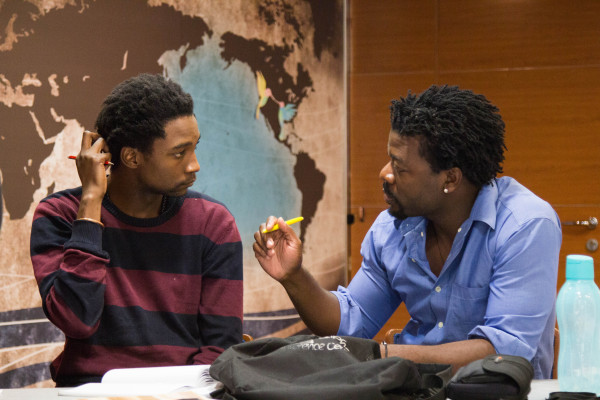 African youth leaders Sabelo Mnukwa and Felix Luis Carlos discuss Disaster Risk Reduction strategies onboard Peace Boat. (Photo by Joseph Hincks)
African youth leaders Sabelo Mnukwa and Felix Luis Carlos discuss Disaster Risk Reduction strategies onboard Peace Boat. (Photo by Joseph Hincks)
In a small room on Deck 6 of the Ocean Dream, youth leaders from four African countries hashed out a strategy for disaster risk reduction (DRR) on their continent as part of a collaborative project between the Peace Boat Disaster Relief Volunteer Center (PBV) and the United Nations Office for Disaster Risk Reduction (UNISDR.)
The project, which took place over three days at sea between Maputo and Cape Town, brought together Fetra Rakotondrasoava and Myriam Vololonarivo from Madagascar, Felix Luis Carlos and Fernando Mussane from Mozambique, and Sabelo Mnukwa and Lalumbe Makuya from South Africa, all of whom had been selected by UNISDR on the basis of their DRR work in their respective countries. They were joined by two United Nations related guests from Kenya, Isabel Njihia and Raphael Obonyo.
“In Madagascar, there are many disaster action plans, and there is a national office for disaster, but there are no youth who participate in the processes,” said 24-year-old Rakotondrasoava, a journalist from Antananarivo.
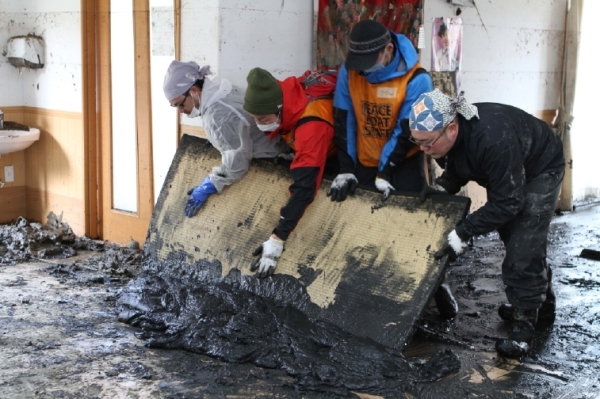 Volunteers from PBV clear mud and debris from homes in Ishinomaki, Japan. (Photo by Ueno Yoshinori)
Volunteers from PBV clear mud and debris from homes in Ishinomaki, Japan. (Photo by Ueno Yoshinori)
Peace Boat first became involved in disaster relief after the Kobe Earthquake in 1995 and has since mobilized volunteers in disaster affected countries such as Chile, the Philippines and Turkey.
Following the Great East Japan Earthquake of 2011, PBV trained and dispatched 13,816 volunteers, likely the largest mobilization in Japanese history.
Earlier this year, PBV partnered with UNISDR on its Make Cities Resilient campaign, designed to engage local authorities in disaster risk reduction.
“Youth have been really pushing to be included in DRR processes,” said Isabel Njihia, Information Management Analyst at the UNISDR Regional Office for Africa in Nairobi, who helped to coordinate the onboard programme. “We found it important to invest in this process, to help the youth to create an action plan that can make them relevant.”
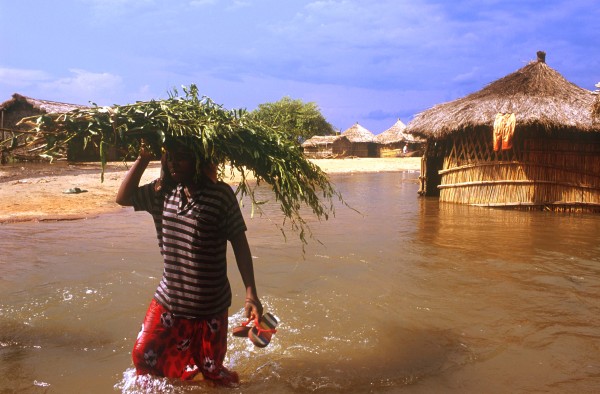 Natural disasters caused at least $26.6 billion in damages in Africa between 1970 and 2012 according to the UN. (Photo from International Federation of Red Cross and Red Crescent Societies (IFRC))
Natural disasters caused at least $26.6 billion in damages in Africa between 1970 and 2012 according to the UN. (Photo from International Federation of Red Cross and Red Crescent Societies (IFRC))
Between 1970 and 2012, over 700,000 people in Africa lost their lives due to natural hazards such as floods, droughts, hurricanes and earthquakes. However the impact of disaster is vastly underreported, with only around one third making official statistics, according to the UN.
In the parlance of sustainable development, the economic damage caused by disasters – and the cost of responding to them – is massive. Between 1970 and 2012 natural disasters caused at least $26.6 billion in damages in Africa.
“The losses that we incurred are far higher than the GDP of over half of the countries in Africa. What does that mean for our growth as a continent?” Njihia said.
The Hyogo Framework for Action (HFA), adopted by 168 UN Member States in the wake of the 2004 Indian Ocean Tsunami, committed to a substantial and widespread reduction in disaster losses. According to the UN, the cost of DRR is between one-quarter and one-tenth of the cost of disaster response.
In March 2015, the World Conference on Disaster Risk Reduction in Sendai will put forward a new DRR framework that builds on the HFA and responds to emerging challenges such as rapid urbanization in Africa.
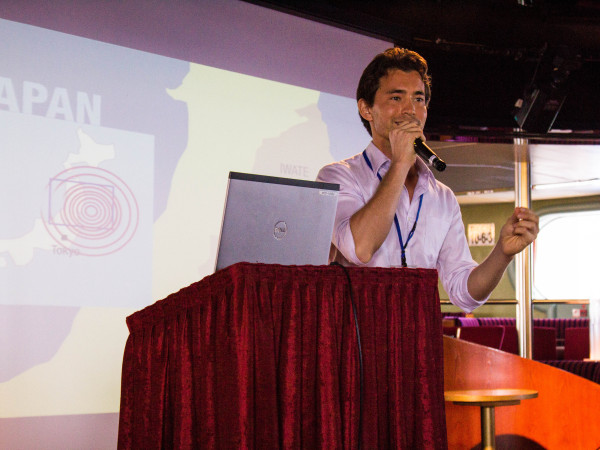 Peace Boat Disaster Relief Volunteer Center (PBV) representative Robin Lewis introduced the youth leaders to Peace Boat passengers. (Photo by Joseph Hincks)
Peace Boat Disaster Relief Volunteer Center (PBV) representative Robin Lewis introduced the youth leaders to Peace Boat passengers. (Photo by Joseph Hincks)
According to Njihia, making cities resilient begins with reframing the idea of what constitutes a disaster. She told the group that there is no such thing as a natural disaster, rather a variety of natural hazards. “It is all about looking at the causal factors. For example, is it the building materials that are a problem, the workmanship, or the location of the building?”
Prior to implementing strategies from the HFA, Kenya’s spend on disaster response had been on par with its national health budget, she said.
Before boarding Peace Boat, the African youth embarked on a field trip to Maputo’s Mafalala district, where they were exposed to some of the human challenges of making cities resilient.
In Mafalala inundated houses rose up from the flood plains, and the youth saw communities suffering from poor urban planning and inadequate sanitation infrastructure.
One resident said she was losing the use of her legs due to an infection picked up from the floodwaters. Brackish water sloshed around her kitchen as she spoke with the youth. “I felt that the situation was so normal for her, she had become used to it. She didn’t want to move,” said Makuya afterwards.
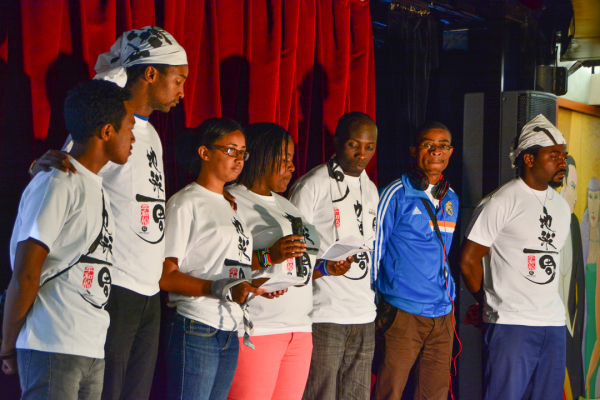 The six African youth leaders, and UNISDR’s DRR Africa Youth Champions Coordinator Raphael Obonyo, read out The Ocean Dream Declaration in the ship’s Broadway Theatre. (Photo by Airi Katsuta)
The six African youth leaders, and UNISDR’s DRR Africa Youth Champions Coordinator Raphael Obonyo, read out The Ocean Dream Declaration in the ship’s Broadway Theatre. (Photo by Airi Katsuta)
Mozambican youth leader Carlos – whose non-profit Luarte uses theatre to communicate social issues such as human rights and HIV awareness – worked with the group on a skit to disseminate the lessons of Mafalala to a Peace Boat audience.
In the ship’s Broadway Theatre, a group of villagers played by three of the youth leaders argued with government officials urging them to uproot their community. The group incorporated Japanese phrases so that the audience could understand their objections before a blue tarp tsunami engulfed the village.
The play culminated in a reading of The Ocean Dream Declaration, a series of DRR commitments the group had devised onboard. “As young people, we require the capacity, resources and ability to effectively implement campaigns to mitigate disaster, holding the belief that there can be nothing for us, without us,” Vololonarivo and Makuya read in unison.
Among the youth’s commitments were organizing a social media campaign to showcase an African youth-led DRR initiative every month for 12 months; initiating a 10 Days for 10 Essentials Twitter Campaign in the run up to Sendai; and persuading 6 local governments to sign up for the UNISDR’s Making Cities Resilient campaign by the end of 2015.
Besides the commitments, the youth leaders said they would take lessons learned from their contemporaries back to their home countries. “What I shall take to Mozambique is the courage of the leaders, the courage to come together and build this relationship,” said Carlos.
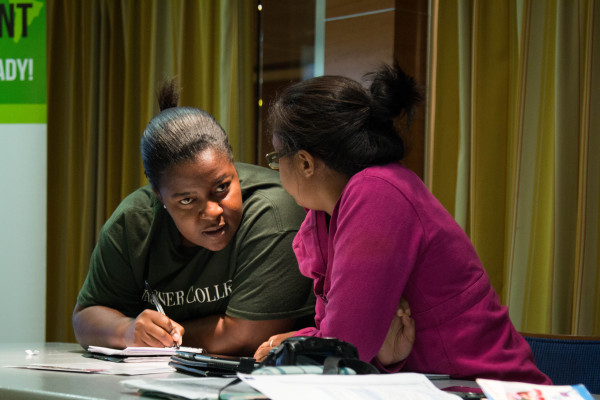 Lalumbe Makuya from South Africa said that working on the politically neutral space of a ship with few distractions helped the group stay focused on the task. (Photo by Joseph Hincks)
Lalumbe Makuya from South Africa said that working on the politically neutral space of a ship with few distractions helped the group stay focused on the task. (Photo by Joseph Hincks)
Raphael Obonyo, UNISDR’s DRR Africa Youth Champions Coordinator, who had helped select the onboard programme’s commitments, stressed that the onus was now on the youth leaders to deliver. “It’s always the challenge with pioneers – so much will be expected. And if you fail no-one else will want to be associated with the project.”
The youth’s ability to fulfill their commitments, Njihia told them, would determine whether the UNISDR killed or continued to fund the project, but in an interview she said that the investment the UN had made in the program had been worthwhile. “We have ended up with something concrete, something that comes from the youth themselves,” she said. “Looking towards Sendai at the post 2015 framework, we can already see that the youth in Africa have not just an active voice; they have a plan to actually make a difference.”



